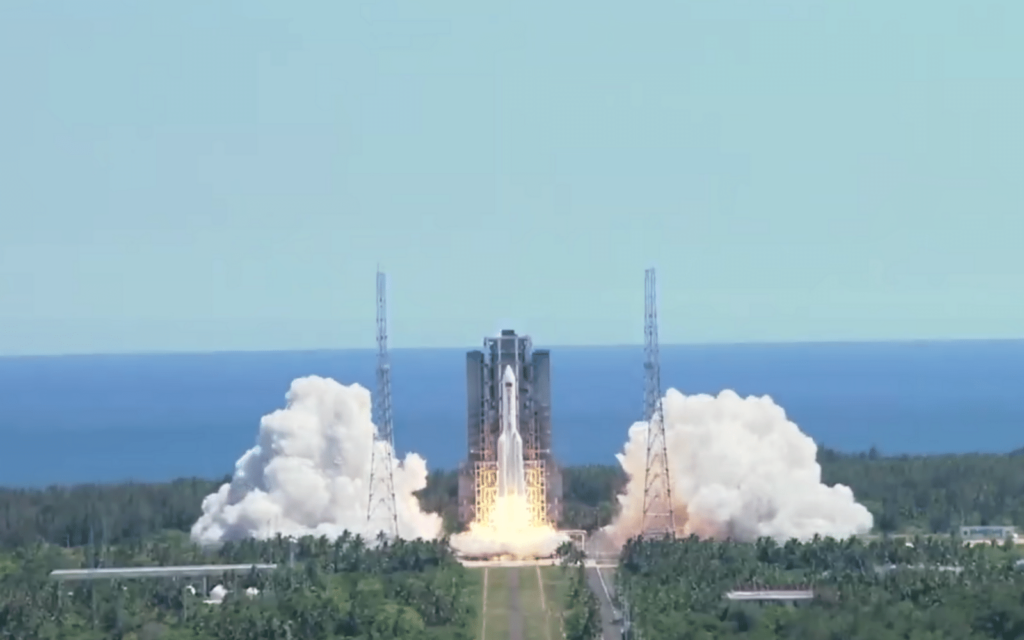If you’ve been paying attention to the skies, you’ll know that China recently launched its Tianhe space station module into orbit. The living section has already played host to astronauts, who moved in to get the place running. The country’s presence in space is about to get more complicated, however.
Over the weekend, a China-made Long March 5b rocket took off from the Wenchang Space Launch Center. It was carrying the country’s Wentian lab module, bound on a mission to Tianhe. When the two connect… well…
Not so Tianhe anymore
The two bits, Tianhe (heavenly river) and Wentian (quest for the heavens), will combine to form China’s Tiangong space station. This isn’t the country’s first orbital gear by this name — Tiangong had two prototype outings as Tiangon-1 and Tiangong-2. It’s still not complete, even after the new 17.9-metre laboratory is connected and set up.
Wentian will provide lab space and short-term sleeping space when crews switch. Its airlock will provide the main entry/exit point for EVAs (extravehicular activities). There’s a third module still bound for China’s space station, called Mengtian (dreaming of the heavens). It’s supposed to launch in October this year.
As you can tell from the translated names, there’s a bit of a trend forming here. The station also has space for Shenzhou and Tianzhou capsules. Odds are the Chinese government has some larger plans in mind as well.
When complete, this will be the largest spacecraft China has ever constructed. At the moment, there is three crew on board the space station. They are commander Chen Dong and crew Liu Yang and Cai Xuzhe. They will remain in space until they’re swapped out with the Shenzhou-15 crew in December this year. Crew members have yet to be announced.




